|
The intercostal muscles are the muscles between the ribs and the most important function they do in aid in breathing. - Have a horse that holds their breath? - Do you have a horse that always favors one lead over the other? - Is your horse harder to bend or turn in a particular direction? - Is your saddle is always slipping off to one side? When a horse habitually holds its ribs to one side, it makes certain movements harder for them. Things like lateral flexion on the side the ribs stick out on becomes very difficult. Holding the proper bend on that side is hard, their shoulder falls into the circle because their ribs are in the way. Higher level lateral movements and lead changes become a challenge, not because the horse is being difficult, but because they simply can't move their ribs out of the way to allow for the proper position of their body to accommodate the movement. Releasing these muscles can help the horse maintain proper muscles function to help them become more balanced and free in their rib cage. Just like people, horses are one-sided or one side dominant just like someone who is right or left handed. Our job as riders, trainers and therapist is to help them be as balanced as possible through proper training and with the help of bodywork. Releasing the intercostal muscles and the rib cage may help your horse overcome that ingrained muscle memory and get them swinging freely through the ribs again.
0 Comments
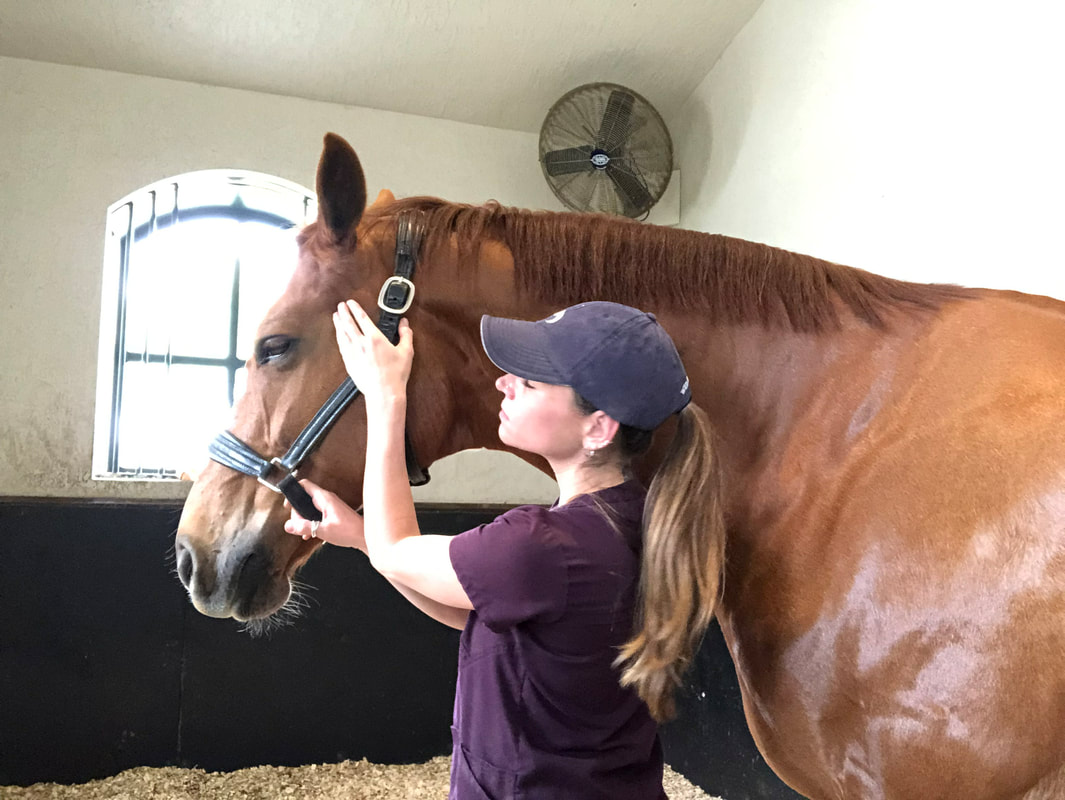 TMJ is the abbreviation for temporomandibular joint. Anatomically, it refers to an area of the cranium where the jaw, or the mandible, contacts and articulates with the temporal bone. The temporal bone is the area of the skull where the ear resides. When these bones are misaligned and not articulating properly and the surrounding tissue of the TMJ is stressed, the TMJ Mechanism is out of balance and cannot function optimally. This condition is known as Temporomandibular Dysfunction, or TMD. TMD shows up in many different shapes and sizes and cases differ in levels of severity. Horses with TMD will clearly show low levels of performance, improper gaits, uneven wear of the teeth, possible head shaking, signs of headaches, cribbing and/or various behavior problems. In some cases, even a slight protrusion in the lower jaw can be seen - the lower incisors of the mandible come behind the upper incisors of the maxilla. Any horse that has TMD will have some level of difficulty in performance. Here are a several things to notice if you think your horse has discomfort in the TMJ joint and surrounded soft tissues - Does your horse’s tongue rest between his upper teeth and lower teeth? - Does your horse drop large amounts of food? - Does he pass whole food in his manure? - Can you hear a popping and/or clicking while your horse chews? - Does your horse have difficulty flexing at the poll? - Does your horse chew more on one side compared to the other? - How does your horse hold his neck and move in leads? - How are your horses’ teeth wearing? You can also gently palpate the muscles on and around the mandible. Notice the quality of the muscles. Do they feel soft or do they feel like a rock? Does the muscle invite you in or push you out? If you think your horse may be suffering from TMD bodywork can be a great way to treat and use as preventative care. It is beneficial to first address and correct any existing 'mechanical' contributors such as hoof trimming, saddle fit, bit use, feeding practices, and dental issues. Without addressing these issues first, the results of bodywork will be limited. In addition, it is absolutely necessary to address the soft tissue and help bring balance back to the body through massage, acupuncture, myofascial release and craniosacral work, which specifically address the Stomatognathic system.
Remember to always consult with your veterinarian, equine dentist, and other qualified professionals who understand your horse, the TMJ, and TMD conditions. If you have your first equine bodywork session scheduled for your horse, you may have questions about the process. Here are my tips for making any bodywork session successful, as well as answers to the three questions I’m asked most by clients about equine massage therapy.
How do I create the best environment for my horse’s massage therapy session? Just like with a human massage at the spa, you want the environment to be as calm and comfortable as possible. Try to find an out-of the-way part of the stable for the session with as few distractions as possible. If your horse’s stall isn’t in a high-traffic area, that may work best. If your horse can be loose in the stall, that’s even better. However, if your horse is nervous or might get into mischief, having someone hold it on a lead rope is a good alternative. Ideally, you don’t want your horse in cross ties because it limits flexibility of the neck and makes it difficult for the horse to relax. You can ask your equine massage therapist what they prefer, but typically you do not want your horse getting treats or eating during the bodywork session. This alllows the horse to “connect” with the therapist and focus on the session. Your horse may need a drink during the massage, so be sure to have fresh water nearby. Also, some horses need to urinate or manure as their circulation is stimulated, so plan for that too. Be sure your horse is clean and dry before the bodyworker arrives. Removing dirt and water allows the therapist to get down to the skin without interference, and it makes the massage more comfortable for your horse. Untack the horse, except for a halter, and if flies are a problem, use a fly repellent product or set up a fan to prevent twitching, tail swishing, and stomping. Fly masks and sheets should be removed for the massage session. Some owners and therapists like to use essential oils to help quiet a horse during massage. Unless your horse is allergic or doesn’t like it, lavender is a calming scent that I use in most of my session. Rubbing a little on the hands and holding them cupped under the horse’s nostrils may be all you need to elicit a deep sigh and dropped head. What information does my equine massage therapist need to know? Under normal circumstances, you will have already had a conversation with the equine massage therapist about your horse’s unique needs. If you haven’t had a chance to do this yet, your therapist will ask about why you scheduled the massage, as well as:
Be sure to tell your equine bodyworker about anything that might affect their safety, such as if your horse doesn’t like to have a particular body part touched or if it has a history of kicking or biting. Your equine massage therapist will do their own assessment on the horse. I like to watch the horse both untacked and under saddle, preferably in person, although sometimes show videos are helpful for issues that come up primarily in competition or when the horse might be anxious. I also offer ride evaluations, where I work the horse under saddle to see how it feels to me. Sometimes owners get so used to their horse’s anatomy and quirks that they don’t even notice imbalances or gait inconsistencies. Most equine massage therapists will also do a quick hands-on full-body check of the horse to see how the muscle tone feels, to look for knots or spasms, and to see if the horse flinches or reacts in any way. How much time should I allow for the massage? Massage sessions vary in length depending on the horse’s size, needs and attention span. A pony generally doesn’t take as long as a draft horse simply because of the amount of area that must be covered. If stretching is being added, that will add a few more minutes to the session. A horse with injuries or very tight muscles usually takes a bit longer to massage. Also, plan on your first session or two taking a little longer, since your therapist needs to get to know the horse and vice versa. Horses that are completely new to massage may need a slower approach until they get used to it. Your massage therapist will tell you specifically, but budget between 45 to 90 minutes for the session itself. Make sure to allow time on either end for the above mentioned preparation and for unwinding post-massage. What should I expect afterwards? Your horse will probably want to drink, urinate, and manure after the massage, sometimes more so than normal because of the stimulatory effects of massage on the horse’s blood flow. The equine massage therapist may also recommend calmly walking the horse for a few minutes after a session to keep the circulation enhanced a little longer. If it’s cold outside, it’s a good idea to blanket your horse to keep it warm and prolong the effects of the massage. Your horse will want to relax after the massage, just like you would, so don’t schedule a training session immediately afterwards. It’s best if you can give your horse the rest of the day off after a massage. Some horses can be a little stiff a day or so after their first few massages. But the more your horse receives equine massage therapy, the more it will get used to it. Be careful, though; your horse may want a spa day every day once it realizes how good it feels from a nice session! If you’ve never had an equine bodywork session for your horse, you might be wondering exactly what it entails. Read on to learn the three basic components of a session and what happens during each one. Pre-Massage Evaluation Chances are when you book an equine bodywork session, the therapist will ask about why you’re calling and issues particular to your horse. But there’s nothing like a detailed evaluation prior to massage to inform a bodyworker about what’s going on. You may be asked to send any video footage you have of the horse, especially if your horse has a problem that shows up when you show or go to clinics. The therapist may also want to watch your horse move through different gaits or movements to see if there are any noticeable anomalies. This can be done immediately before a session or a week or two in advance, depending on the situation. It is helpful for equine massage therapists to see the horse moving both at liberty and under saddle. This helps indicate if certain problems are related to the saddle, tack, or rider technique. I also offer riding evaluations, where I climb into the saddle on your horse to see how it feels and perhaps notice subtle imbalances or inconsistencies you may have missed or grown used to. At the start of a session, most equine bodyworkers like to perform a quick hands-on assessment over the horse’s body. This not only identifies any areas of potential pain or stiffness, but it lets them know how a regular equine client feels on any given day. Bodywork Once you’ve set up the perfect environment for bodywork, the session can begin. Every equine bodyworker is different in their technique. Some use a style similar to human sports massage, while others do some specific massage techniques combined with manipulating precise spots on the horse’s body related to performance. When pressure is applied to these spots, like with the Masterson Method that I employ, the horse experiences a release of tension, and muscle tightness and spasms can be relieved. This also helps maintain range of motion and suppleness in equine athletes. Pain is relieved, and the horse’s mood may even improve. Many equine massage therapists also utilize stretching to further keep muscle and connective tissue responsive and joints healthy. You can ask your equine massage therapist about stretches you can do with your horse between sessions to preserve range of motion and eliminate stiffness. In addition to stretching the legs, your equine bodyworker may elect to stretch the neck and the barrel. The tail, which is connected to the spine, can be gently pulled too, in order to relieve pressure on the dock and help lengthen the topline. Post-Massage Follow Up Your equine massage therapist may have specific instructions for care after your horse’s bodywork session. While the horse is doing a calm post-massage walk or getting a welcome drink of water, it’s a good time to discuss the therapist’s findings. Often, an equine bodyworker will have a checklist or anatomical diagram that they use to mark any areas of concern where they felt tightness or noticed imbalances. They will also make note of any reactions from the horse, whether positive or negative, which might help pinpoint pain or release of a previous spasm. After the massage, your therapist can recommend the next course of action, such as regular massage sessions or a visit from the equine chiropractor to check out any spots that feel out of alignment and can’t be improved with massage. Because I offer comprehensive bodywork for both horse and rider, at this time I also like to examine other factors that can influence the horse’s physique. These include equitation skills, training regimens, saddlery, and rider fitness. Once I am familiar with the horse and rider as a system, I can develop a plan with my clients that meets their unique needs for ongoing service. Once you’ve decided your horse needs massage sessions, you might say, “Now what?” How do you decide who to choose to provide this service? Here are some tips for selecting the right equine massage therapist for you and your horse.
Where to Find Equine Massage Therapists Probably the best to find an equine massage therapist is through word of mouth. Ask around your barn, consult your trainer, or call some of the top stables or the racetrack in your area to see who they use. Ideally you want to find someone who knows your breed and riding discipline, but most seasoned practitioners will have experience with a wide range of both. Other places to find or inquire about equine massage therapists include:
What to Look for in an Equine Massage Therapist You want to find a therapist who has completed a formal training program in equine massage because this isn’t something one can learn on one’s own. Ask any prospective therapist where they studied, were they certified or accredited in some way, and do they still perform that particular type of massage and what continuing education they have completed. Styles of equine massage and bodywork vary greatly, just like with humans, and you may feel one type is better than another for your horse’s physical and emotional needs. Therefore, you also want to ask about what type of massage/bodywork the therapist performs. Do they do myofascial release working on key points on the horse’s body, or do they use more of a Swedish massage technique that vigorously rubs all the major superficial muscles? Do they incorporate stretching into massage sessions? Some therapists combine techniques they have learned from several schools or add things they pick up in continuing education (another thing to ask about). Ideally, you want an experienced massage therapist, but it’s perfectly okay to select one right out of school too, provided they have had lots of hands-on practice with horses, either as part of a formal program or as part of their own self-study. Ask your prospective equine massage therapist about the types of cases they’ve treated, to see if they have knowledge of your horse’s particular problem or training needs. Your horse’s workout as a jumper is going to differ radically from a dressage or driving horse. It’s also worth asking about the therapist’s general experience with equines, such as riding, training, or grooming. Other Questions to Ask a Prospective Equine Massage Therapist Once you’ve narrowed down your favorite practitioners, there are still a few more questions you should ask:
If you like what you hear, schedule a trial session and see how it goes. With any luck, you’ll have met your horse’s new best friend and will want to schedule regular appointments from there on. Your normally docile and eager-to-please gelding seems out of sorts and reluctant to train. Something feels off to you, but you can’t put your finger on it, so you call out the vet. After a thorough examination, your veterinarian can’t find anything wrong with your horse. “Get him a massage,” she says, as she packs up the truck. Wise words from that equine doc. While it’s always good to have a professional check over your horse if it’s behaving abnormally, there are numerous situations that can be improved by equine massage therapy. If your horse doesn’t seem quite right and your vet has ruled out any serious causes, a massage may be just the remedy. Here are some classic scenarios where a massage may be indicated. Disruptive Behavior If your horse is normally an angel and suddenly doesn’t want to work, it’s a sign something is amiss. Typical behaviors include:
Your horse may have some stiffness or muscle pain that is causing it to act in an unusual manner. Even a little bump (and we know horses do stupid things when we’re not looking) can start a pain feedback loop that results in more stiffness and guarding. Low Energy, Easily Fatigued If the usual amount of exercise winds your horse easily, or if your horse is just dragging, it could be due to a number of reasons. But if you know it’s not diet or illness, a massage may be a good pick-me-up for your horse. In addition to relieving body pain, equine massage stimulates circulation and energizes the horse, often the next day or the day after. Imbalanced Horse It’s easy to get in the habit of training more to one side than the other. Did you know horses have left or right preferences just like humans do? But if you continually favor one side when running through your exercises, your horse can become imbalanced. Likewise, certain conformational discrepancies can cause unevenness in a horse. A massage can help rebalance the horse by eliminating one-sided stiffness and by improving suppleness on the horse’s “bad” side. Depressed or Cranky In addition to being lethargic, your horse may seem sad or crabby--definitely a sign something is going on. If there are no known causes for your horse’s mood, a massage can perk up the horse. Equine massage encourages the production of endorphins, chemicals the horse produces in its own body to relieve pain and boost mood. Chronic Health Conditions If your horse has chronic health problems that may cause pain, decreased mobility, or imbalance, a regular massage is a must. Recurrent bouts of laminitis, navicular disease, and arthritis, for example, can all benefit from massage. Post-Illness or Surgery As long as your veterinarian allows it, equine massage is almost always ideal for horses recovering from illness, including colic, or surgery. Because it stimulates the circulatory system, massage helps speed healing cells to areas of injury. And as mentioned above, massage also treats pain and stiffness. For horses that are confined to stall rest, equine bodywork may also help maintain muscle tone and let the horse relax to continue healing. Heavy Training Your horse doesn’t have to have anything wrong with it to warrant a regular massage session. Just like human athletes, horses that are training heavily and competing regularly do well with frequent massages. Equine massage helps work out muscle spasms, improves range of motion, and facilitates the removal of waste products, like lactic acid, from muscle tissue. Remember: your horse is an athlete too! Rehoming Have you taken in a rescue or just brought home a horse you purchased? A massage can be a great way to help your new arrival settle in. It allows your horse to associate pleasure with its current surroundings, and it will work out any kinks from trailer travel too. Click on contact us if would like set up a consultation to see if your equine partner needs a bodywork session. Your Equine Solutions is a blog for equestrians, horse owners, trainers, riders and horse enthusiasts alike. We created this educational blog so you can learn tips and tools so you and your equine partner can enhance your performance and overall well being.
Each post will focus on a different aspect of holistic health, performance and well-being for the horse and rider. Some topics we will be addressing include:
We will also have guest writers such as top trainers, chiropractors and veterinarians weigh in on all different topics related to helping you and your horse perform and feel your best. Feel free to comment if you have thoughts or suggestions for future posts. We love feedback and would be happy to answer any questions you might have. Please enter your email in the "Subscribe" bar, you'll get more free information and regular updates about this blog and upcoming educational events and our COMING SOON Equine Solutions Store and Members Only Educational Forum. Thanks for visiting! |
AuthorMeghan Brady is a equine industry professional specializing in a holistic approach for both horse and rider to enhance performance and well being. Archives
October 2023
Categories |
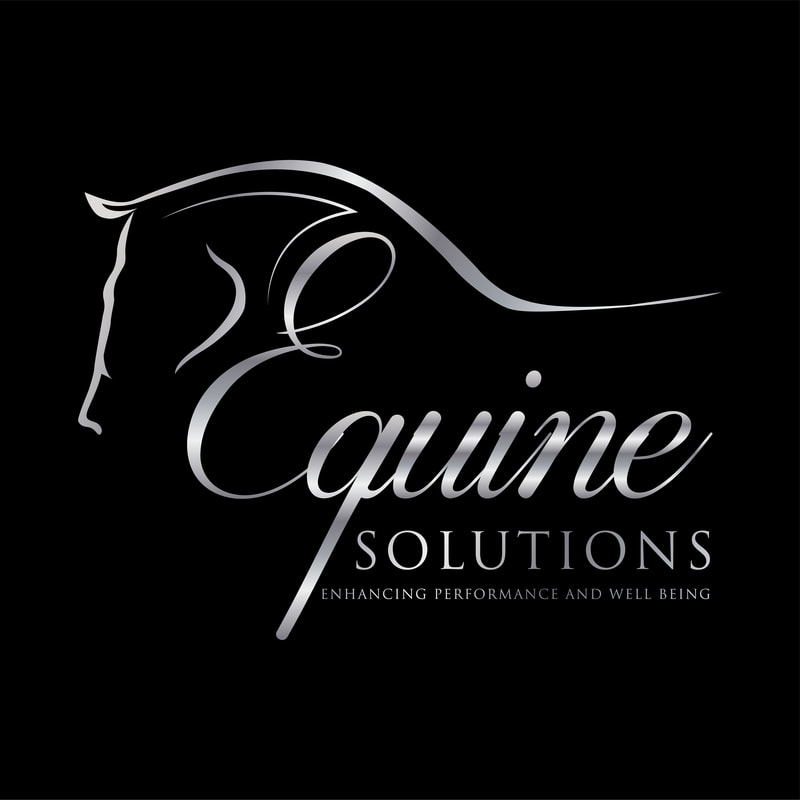
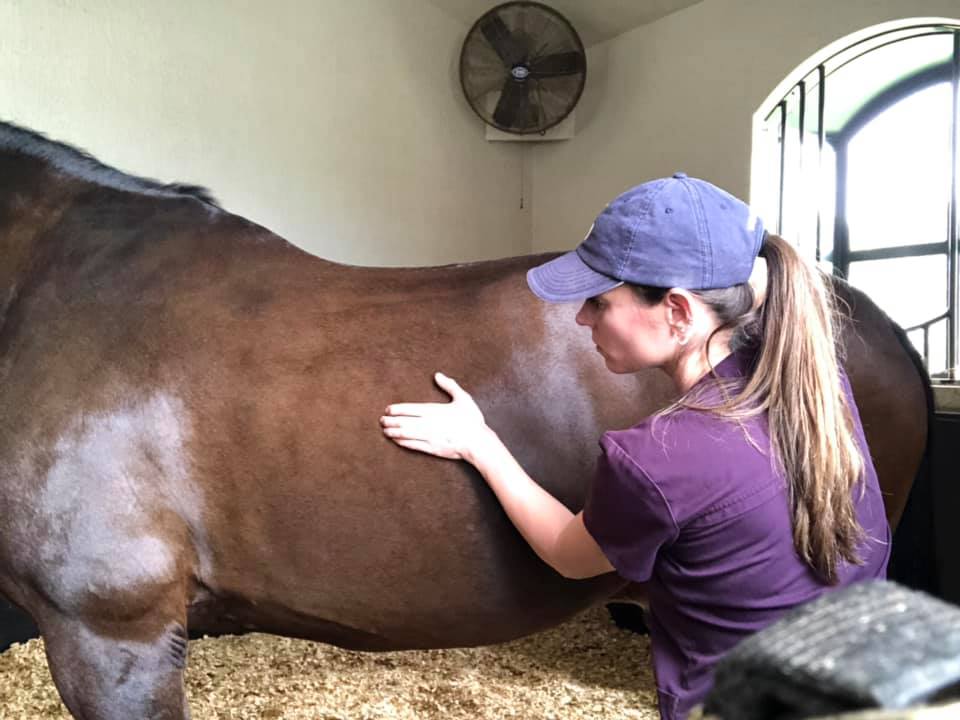
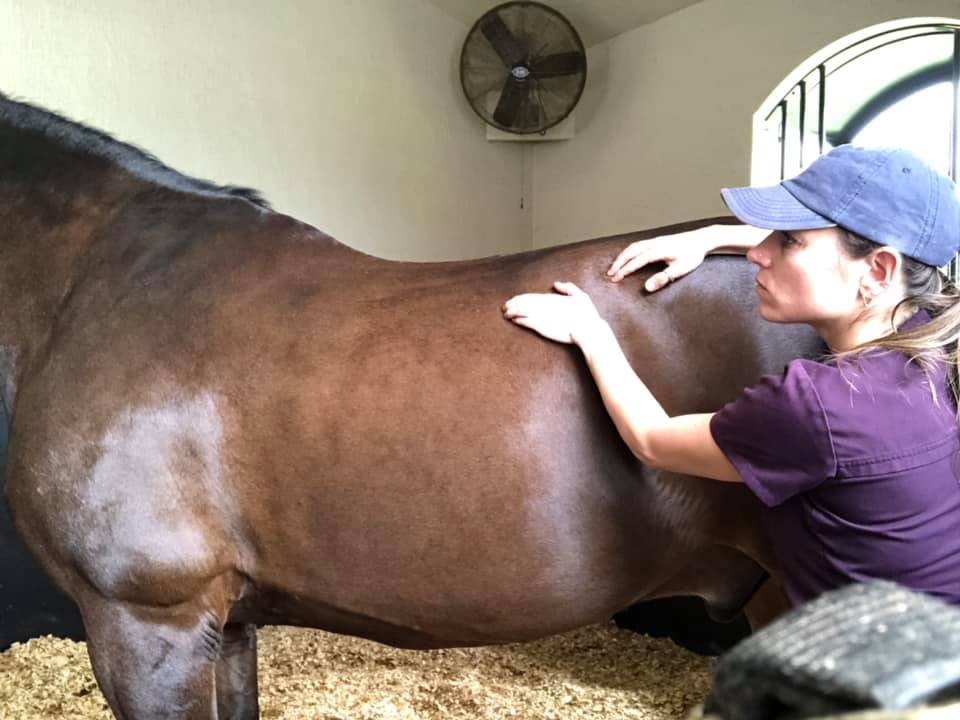
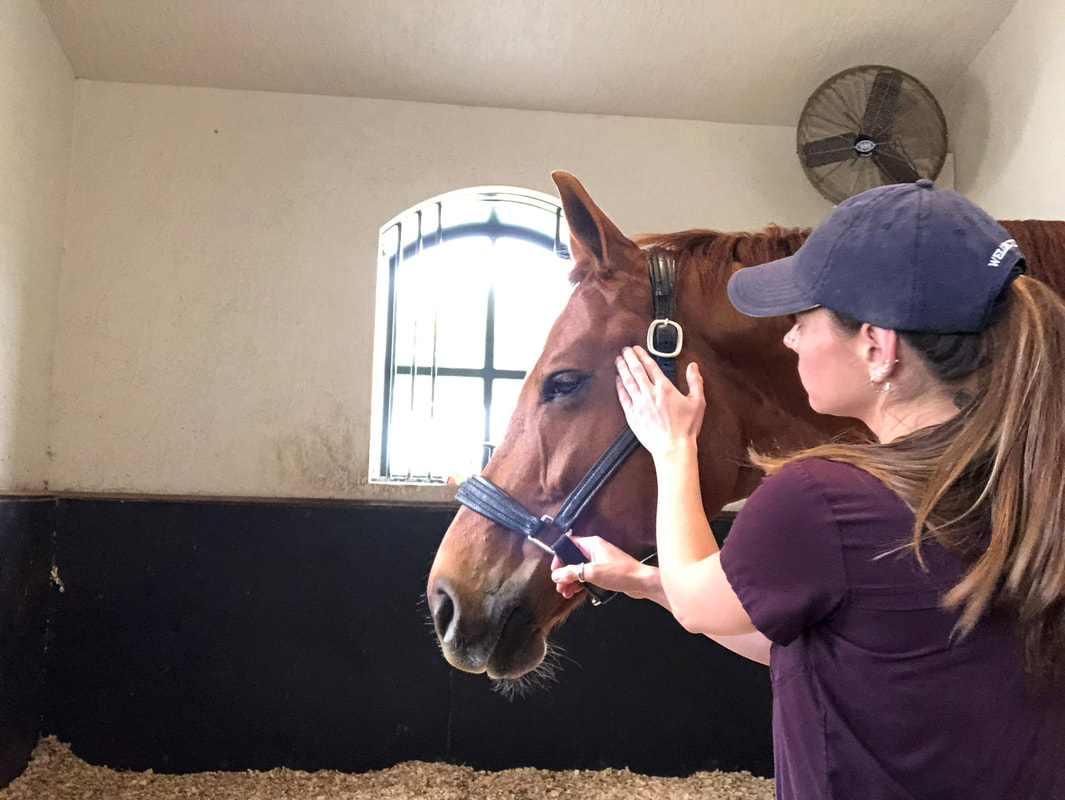
 RSS Feed
RSS Feed